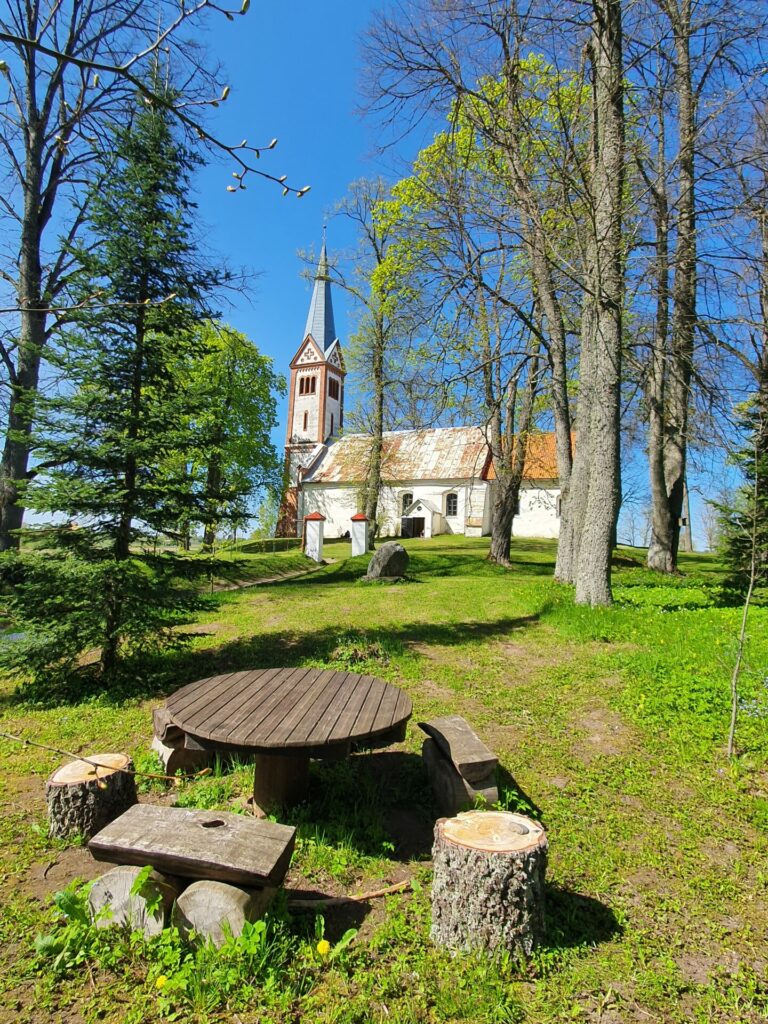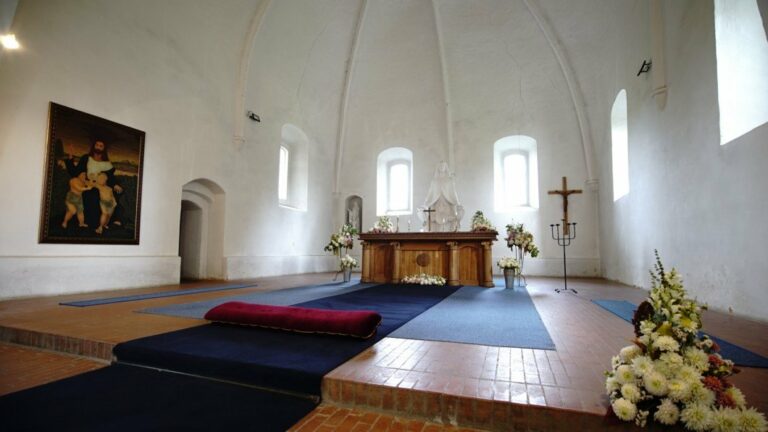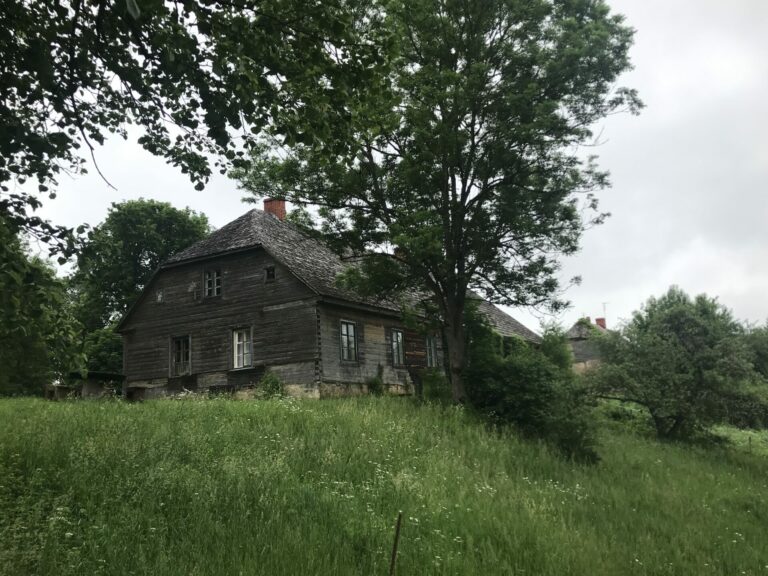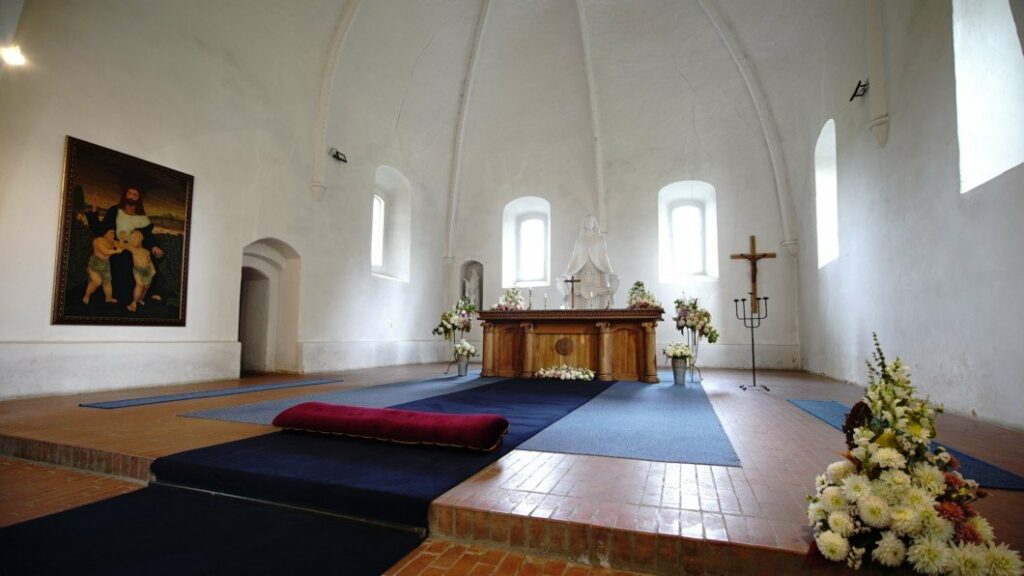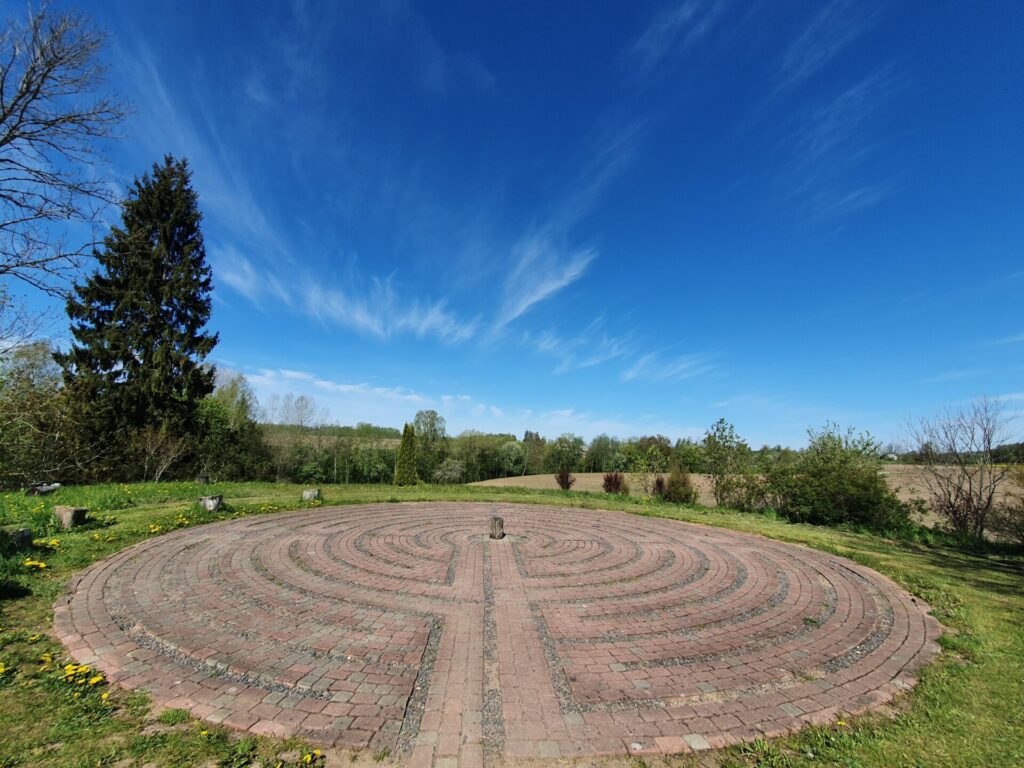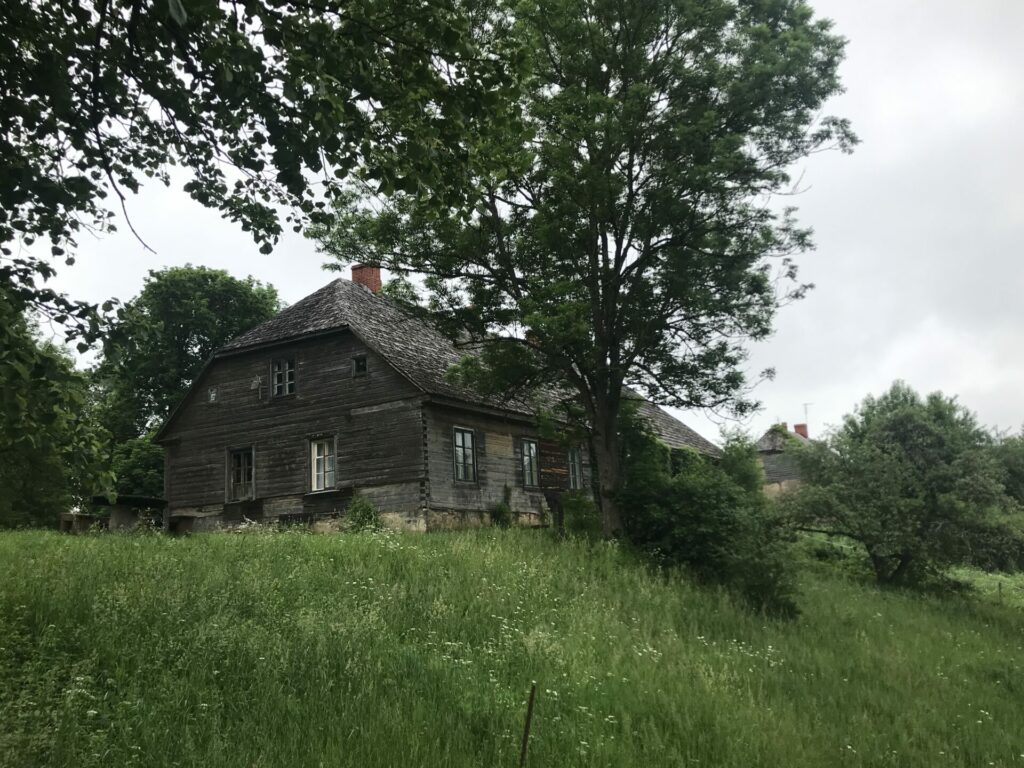Krimulda Evangelical Lutheran Church
 Sigulda – Krimulda
Sigulda – Krimulda
According to the statements of Chronicle of Henry of Livonia, the Krimulda County leader Kaupo, who had accepted Christianity around 1200. In 1203-1204, Kaupo went to Rome, where he met Pope Innocent III, to tell him about Livonia. Krimulda Church (formerly called Kubesele Church) was founded in 1205. After the Liv chief and king Kaupo returned from Rome on September 8, 1204, with gifts from Pope Innocent, 100 pieces of gold, the priest Alobrand built a church in Kaupo, Kubesele. Although the Krimulda Church has been repeatedly destroyed and restored over time, it still keeps the character of the ancient church. The church was restored and rebuilt (mid-17th century, early 20th century).
Since the 4th century the labyrinth of one path has become one of the most widespread Christian symbols of man’s path to God. Krimulda labyrinth was built after the 13th century. a model of a labyrinth on the floor of Chartres Cathedral (France) at the beginning of All human life is the way to God. The path to God is not a wide and simple straight path. Most often it is very narrow and winding, rich in challenges and surprises. Man can measure this path only by faith, trusting that he will eventually come to God’s home and see God face to face. Before embarking on a journey through the labyrinth, it is advisable to sit or walk around to ponder the questions being answered and to ask God to speak. The maze usually goes silent, without hurrying and stopping as needed.
On the bank of the Runtiņupīte, on an elongated hill, an old castle mound, is the old Krimulda rectory, built in 1775 by Baron Magnus von Helmersen, the owner of the Krimulda manor of Swedish origin. Rebuilt several times, it has survived to the present day.
Contact person for receiving the stamp (request to call advance) AT THE MOMENT STAMP ISN’T AVAILABLE!!! – Mr Sandis +371 29137927





